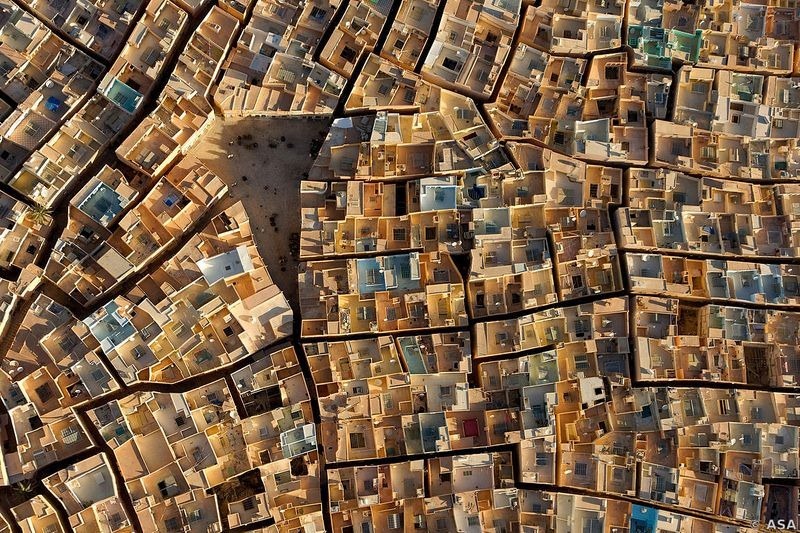
El Ateuf, M’Zab Valley.
Each of the five towns — Ghardaia, Melika, Beni Isguen, Bou Noura and El Atteuf — are built on a knoll and surrounded by pastel-colored box-like buildings, tightly packed together in concentric circles around a central mosque built on the summit of a hill. The mosque is conceived as a fortress, the last bastion of resistance in the event of a siege, and comprises an arsenal as well as a granary. Around this building are houses built in concentric circles up to the ramparts. These houses were designed for communal living, within a remarkably egalitarian social structure which respects the privacy of the family. Buildings are tightly packed, with narrow alleyways and covered passages winding between them.
Ghardaia is the main town and capital of the M'zab, while El-Ateuf is the oldest settlement in the region. Beni Isguen is the most enigmatic of all the M’zab towns. It’s considered very holy and until recently, only residents of the town were allowed to enter after dark and at night the gate was locked. This is no longer the case, but Beni Isguen remains the most traditional settlement in M’zab. The women here are very camera shy, both by tradition and by religion. As Johathan Oakes writes in his Algeria travel guide:
Here you will find that all the women follow the tradition of wearing the haik, a large cloth that is wrapped around the body and face, allowing only one eye to be seen. Before marriage girls are allowed to show their faces but after marriage then only one eye can be shown. You will find that if you look at any of these women they will tighten their hold on the material, thus closing the hole even more. In the past it was custom for women to face the wall when strangers passed; though this is no longer the case you will still find that women will do their best to avoid your stares and will often follow another path when they see you coming. These women are gloriously photogenic but it is strictly forbidden to take a photo of them and doing so would cause outrage.
All the towns of M’zab are notable for having preserved their original culture and cohesion between the communities throughout the years, virtually untouched by the outside world. In 1982, they were awarded UNESCO World Heritage status.

Ghardaia, M’Zab Valley.

Beni Isguen, M’Zab Valley.

Beni Isguen, M’Zab Valley.

Ghardaia, M’Zab Valley.

Aerial view of orchards and gardens upstream from Ghardaia.

Beni Isguen, M’Zab Valley.

Ghardaia.

Ghardaia.

An example of traditional architecture in Ghardaia.

Shops line the streets in Ghardaia.

Narrow streets in Ghardaia.

Women in Ghardaia.


Ghardaia.

El Ateuf.

Source
